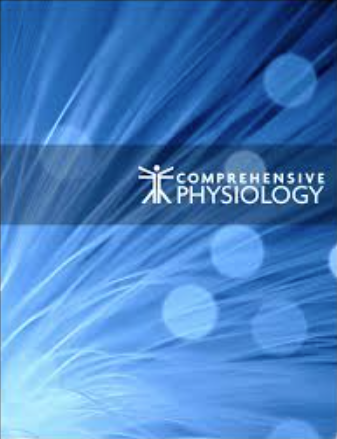下载PDF
{"title":"哺乳动物神经肌肉连接的结构和功能。","authors":"Leah A Davis, Matthew J Fogarty, Alyssa Brown, Gary C Sieck","doi":"10.1002/cphy.c210022","DOIUrl":null,"url":null,"abstract":"<p><p>The mammalian neuromuscular junction (NMJ) comprises a presynaptic terminal, a postsynaptic receptor region on the muscle fiber (endplate), and the perisynaptic (terminal) Schwann cell. As with any synapse, the purpose of the NMJ is to transmit signals from the nervous system to muscle fibers. This neural control of muscle fibers is organized as motor units, which display distinct structural and functional phenotypes including differences in pre- and postsynaptic elements of NMJs. Motor units vary considerably in the frequency of their activation (both motor neuron discharge rate and duration/duty cycle), force generation, and susceptibility to fatigue. For earlier and more frequently recruited motor units, the structure and function of the activated NMJs must have high fidelity to ensure consistent activation and continued contractile response to sustain vital motor behaviors (e.g., breathing and postural balance). Similarly, for higher force less frequent behaviors (e.g., coughing and jumping), the structure and function of recruited NMJs must ensure short-term reliable activation but not activation sustained for a prolonged period in which fatigue may occur. The NMJ is highly plastic, changing structurally and functionally throughout the life span from embryonic development to old age. The NMJ also changes under pathological conditions including acute and chronic disease. Such neuroplasticity often varies across motor unit types. © 2022 American Physiological Society. Compr Physiol 12:1-36, 2022.</p>","PeriodicalId":10573,"journal":{"name":"Comprehensive Physiology","volume":"12 4","pages":"3731-3766"},"PeriodicalIF":4.2000,"publicationDate":"2022-08-11","publicationTypes":"Journal Article","fieldsOfStudy":null,"isOpenAccess":false,"openAccessPdf":"https://www.ncbi.nlm.nih.gov/pmc/articles/PMC10461538/pdf/nihms-1921908.pdf","citationCount":"3","resultStr":"{\"title\":\"Structure and Function of the Mammalian Neuromuscular Junction.\",\"authors\":\"Leah A Davis, Matthew J Fogarty, Alyssa Brown, Gary C Sieck\",\"doi\":\"10.1002/cphy.c210022\",\"DOIUrl\":null,\"url\":null,\"abstract\":\"<p><p>The mammalian neuromuscular junction (NMJ) comprises a presynaptic terminal, a postsynaptic receptor region on the muscle fiber (endplate), and the perisynaptic (terminal) Schwann cell. As with any synapse, the purpose of the NMJ is to transmit signals from the nervous system to muscle fibers. This neural control of muscle fibers is organized as motor units, which display distinct structural and functional phenotypes including differences in pre- and postsynaptic elements of NMJs. Motor units vary considerably in the frequency of their activation (both motor neuron discharge rate and duration/duty cycle), force generation, and susceptibility to fatigue. For earlier and more frequently recruited motor units, the structure and function of the activated NMJs must have high fidelity to ensure consistent activation and continued contractile response to sustain vital motor behaviors (e.g., breathing and postural balance). Similarly, for higher force less frequent behaviors (e.g., coughing and jumping), the structure and function of recruited NMJs must ensure short-term reliable activation but not activation sustained for a prolonged period in which fatigue may occur. The NMJ is highly plastic, changing structurally and functionally throughout the life span from embryonic development to old age. The NMJ also changes under pathological conditions including acute and chronic disease. Such neuroplasticity often varies across motor unit types. © 2022 American Physiological Society. Compr Physiol 12:1-36, 2022.</p>\",\"PeriodicalId\":10573,\"journal\":{\"name\":\"Comprehensive Physiology\",\"volume\":\"12 4\",\"pages\":\"3731-3766\"},\"PeriodicalIF\":4.2000,\"publicationDate\":\"2022-08-11\",\"publicationTypes\":\"Journal Article\",\"fieldsOfStudy\":null,\"isOpenAccess\":false,\"openAccessPdf\":\"https://www.ncbi.nlm.nih.gov/pmc/articles/PMC10461538/pdf/nihms-1921908.pdf\",\"citationCount\":\"3\",\"resultStr\":null,\"platform\":\"Semanticscholar\",\"paperid\":null,\"PeriodicalName\":\"Comprehensive Physiology\",\"FirstCategoryId\":\"3\",\"ListUrlMain\":\"https://doi.org/10.1002/cphy.c210022\",\"RegionNum\":2,\"RegionCategory\":\"医学\",\"ArticlePicture\":[],\"TitleCN\":null,\"AbstractTextCN\":null,\"PMCID\":null,\"EPubDate\":\"\",\"PubModel\":\"\",\"JCR\":\"Q1\",\"JCRName\":\"PHYSIOLOGY\",\"Score\":null,\"Total\":0}","platform":"Semanticscholar","paperid":null,"PeriodicalName":"Comprehensive Physiology","FirstCategoryId":"3","ListUrlMain":"https://doi.org/10.1002/cphy.c210022","RegionNum":2,"RegionCategory":"医学","ArticlePicture":[],"TitleCN":null,"AbstractTextCN":null,"PMCID":null,"EPubDate":"","PubModel":"","JCR":"Q1","JCRName":"PHYSIOLOGY","Score":null,"Total":0}
引用次数: 3
引用
批量引用


